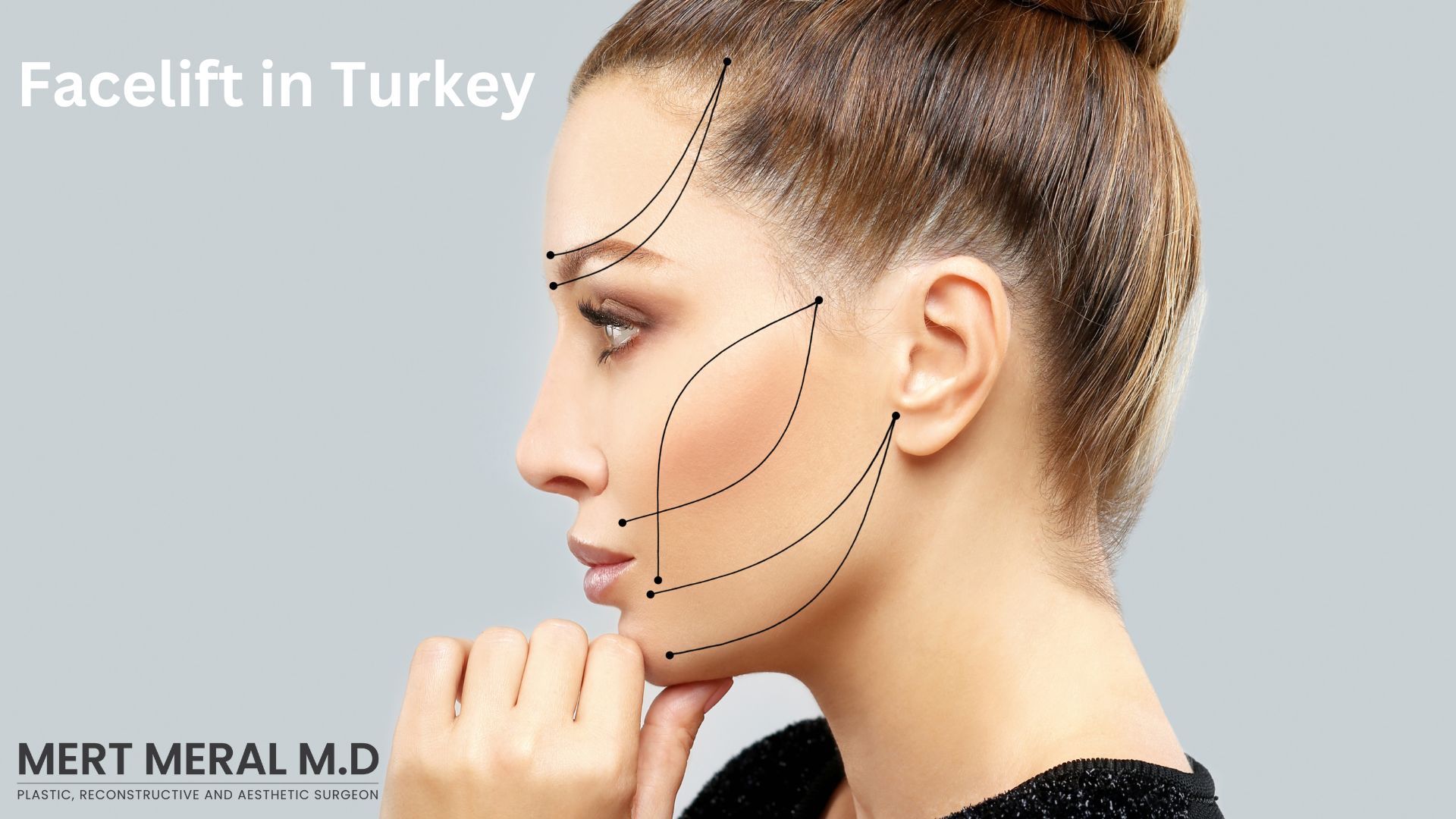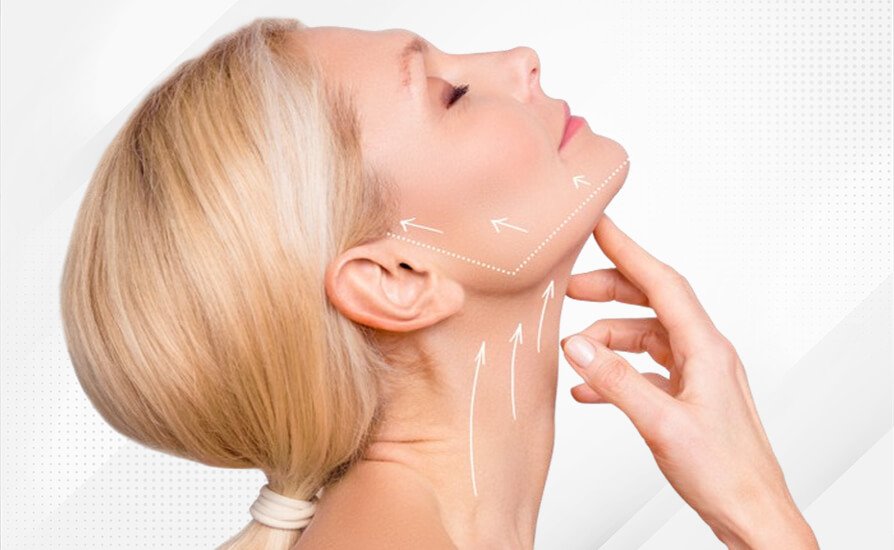Why choose Turkey for a facelift? Is a facelift safe in Antalya, Turkey?
Spc.Should I go to Turkey for face lift surgery?

Turkey is one of the preferred countries for plastic surgery. Turkey has become a popular destination for face lift surgery because the surgery prices are more affordable than in many other Western countries, there are qualified and experienced doctors, and the clinics are equipped with modern devices. However, if you prefer Turkey for face lift surgery, there is some work you need to do. In this context, there are some things you should consider:
- Research the surgeon's credentials, expertise, and reputation before deciding on a particular surgeon. Choose a board-certified plastic surgeon to have the facelift surgery.
- Make sure that the surgical clinic is accredited and has high safety and hygiene standards.
- Also consider travel for the surgery, clinic staff communication, and post-operative care.
- Clinics in Turkey usually speak English, so you should have no problem if you speak English.
- The cost of surgery in Turkey is low, and the cost is affordable even if needed for follow-up treatment and necessary revision operations in the future.
When you decide to have a face lift plastic surgery in Turkey, after carefully examining these issues, the benefits and disadvantages should be evaluated with an experienced plastic surgeon. Prioritising the safety of the surgery and achieving the desired result is crucial when making this choice.
At Mert Meral Plastic, Reconstructive and Aesthetic Clinic, you can perform your face lift surgery in a way that covers all these conditions. Dr. Mert Meral is an accredited doctor who is an expert in plastic surgery, has experience, and has the necessary certificates.
Is Turkey safe for facelift surgery?
Yes, facelift surgery is safe. However when having facelift surgery in Turkey, it is critical to choose a highly qualified and experienced surgeon with expertise in effective procedures. Choosing a board-certified surgeon with a solid reputation in the field will increase the safety of the surgery. Choosing a clinic that complies with strict safety and hygiene requirements will further enhance safety.
Before starting the surgery, you should have a comprehensive consultation with your doctor. During this appointment, your surgeon should review your medical history, examine your face, and talk to you about your expectations and surgical goals. Antalya, Turkey, is a safe and reliable choice for facelift surgery if you choose a qualified, competent surgeon and a reputable facility that prioritises safety and hygiene. For this reason, many international patients prefer Turkey.
How much does facelift surgery cost in Turkey?
The cost of a facelift can vary significantly based on several variables, such as the surgery's location, the surgeon's experience and training, the particular technique employed, and the degree of the procedure. It is significant to note that this expense normally includes any pre- and post-operative appointments, facility costs, anaesthetic expenses, and the surgeon's fees.
Prices are more affordable, typically ranging from $3,000 to $7,000 in Turkey, making it a popular destination for face lift surgery. Facelift procedures cost between $8,000 and $20,000 in the US; meanwhile, prices range from €7,000 to €18,000 in Europe.
|
|
USA |
UK |
Turkey |
|
Facelift Cost |
$8,000 to $20,000 |
€7,000 to €18,000 |
$3,000 to $7,000 |

What is the recovery time for a facelift?
Recovery times for facelifts vary depending on the surgical technique applied, the patient's skin, age, and health. However, to achieve the best recovery, the patient should plan to stay away from work and other regular activities for at least 1-2 weeks.
Expect some face and neck pain, swelling, and bruising in the first few days after surgery. Your doctor may recommend taking painkillers and applying cold compresses to control these symptoms.
To minimise swelling, you will need to lie down and sleep with your head elevated, and you will avoid heavy lifting and intense exercise the first week following surgery. You must carefully follow your surgeon's post-operative instructions, including any recommended massages or exercises to speed healing and reduce swelling.
Within 2-3 weeks after surgery, most patients can resume work and other daily activities, although some swelling and bruising may persist. It may take a month for the facelift to fully heal and show results. It is critical to be patient during the healing process and to follow your surgeon's advice carefully to achieve maximum healing and best results.
How long do facelifts last?
The patient's age, skin condition, and general state of health, as well as the extent of the procedure, surgical method, and postoperative care, all influence how long a facelift will last. A facelift usually lasts between 5 and 15 years, but individual results can vary. While some people may have results that last longer than others, this variability is expected. While a facelift can enhance your appearance and reverse the ageing process, it cannot halt the natural ageing process.
As the skin continues to age, the results of a facelift will gradually erode. To help maintain the benefits of a facelift, it is critical to take good care of your skin and stay out of the sun as much as possible. A balanced diet, frequent exercise, and quitting smoking are all aspects of a healthy lifestyle that can help a facelift last longer. To maintain results over time, some patients may opt for touch-up operations or non-surgical treatments.
Does facelift surgery leave a scar?
Any surgical operation, including facelift surgery, will always leave scars. Incisions are made in the skin during a facelift to lift and rearrange the facial tissues, and these incisions leave scars. The scars from a facelift can, however, be lessened and may eventually become less obvious with the right care and attention. The length of the procedure, the patient's skin type and capacity to recover, the surgeon's technique, and other variables can all affect the degree of scarring following a facelift. Although scars following a facelift are typically hidden in places such as behind or in front of the ears or along the hairline, they may still be somewhat noticeable.
Patients can take several measures to reduce the visibility of scars following a facelift, including:
- It's crucial to closely adhere to your surgeon's post-operative instructions, which include keeping the incision sites clean and dry, avoiding strenuous activity, and taking any prescribed medications.
- It's crucial to prevent lengthy sun exposure or to use sunscreen with a high SPF rating since exposure to sunlight can make scars more obvious.
- After the scars have recovered, massaging them might assist to soften the tissue and lessen their appearance.
- Topical lotions, silicone sheeting, and laser therapy are a few of the therapies that might help lessen the visibility of scars.
While facelift scars may never completely disappear, with the right care and attention, they may frequently lessen and become less noticeable over time. To understand what results you might reasonably expect, it is crucial to address your worries regarding scarring with your plastic surgeon prior to the treatment.
What age is best to get a facelift?
Since every person's ageing process and cosmetic concerns are different, there is no one age that is optimum to get a facelift. The individual's physical, emotional, and intended objectives should all be taken into consideration before deciding whether to get a facelift.
Facelifts are usually done on people between 40 and 60, but older people may benefit too. A person who is in generally excellent health, does not smoke, and has skin that is still somewhat elastic is the perfect candidate for a facelift. It's crucial to understand that a facelift is not a one-size-fits-all procedure, and the degree of the surgery needed may change depending on a person's particular cosmetic issues. Non-surgical procedures like Botox, fillers, or laser therapy may occasionally be a better choice to address particular issues. A board-certified plastic surgeon can help you examine your unique needs and decide if a facelift is the best option for you before you decide whether or not to get one.
Are there risks of a facelift in Turkey?
The dangers and potential problems of a facelift exist, just like any plastic surgery.
- Bleeding under the skin from a facelift can form a haematoma or seroma.
- Infection is a problem associated with all surgeries, including facelift.
- Injuries to the facial nerves that control facial expression during a facelift can temporarily weaken facial muscles.
- Although scars from a facelift are usually well hidden, some people may develop noticeable scars, especially if they have a history of keloids.
However, these risks are minimised in facelift surgery performed by a good surgeon, and the surgery is performed safely.
Note:
This article is for informational and advisory purposes. The recommendations of your surgeon who will examine you and perform the surgery should be a priority. We wish you a healthy days.
You can contact Mert Meral M.D to get detailed information (including cost) about facelift surgery.

 TR
TR